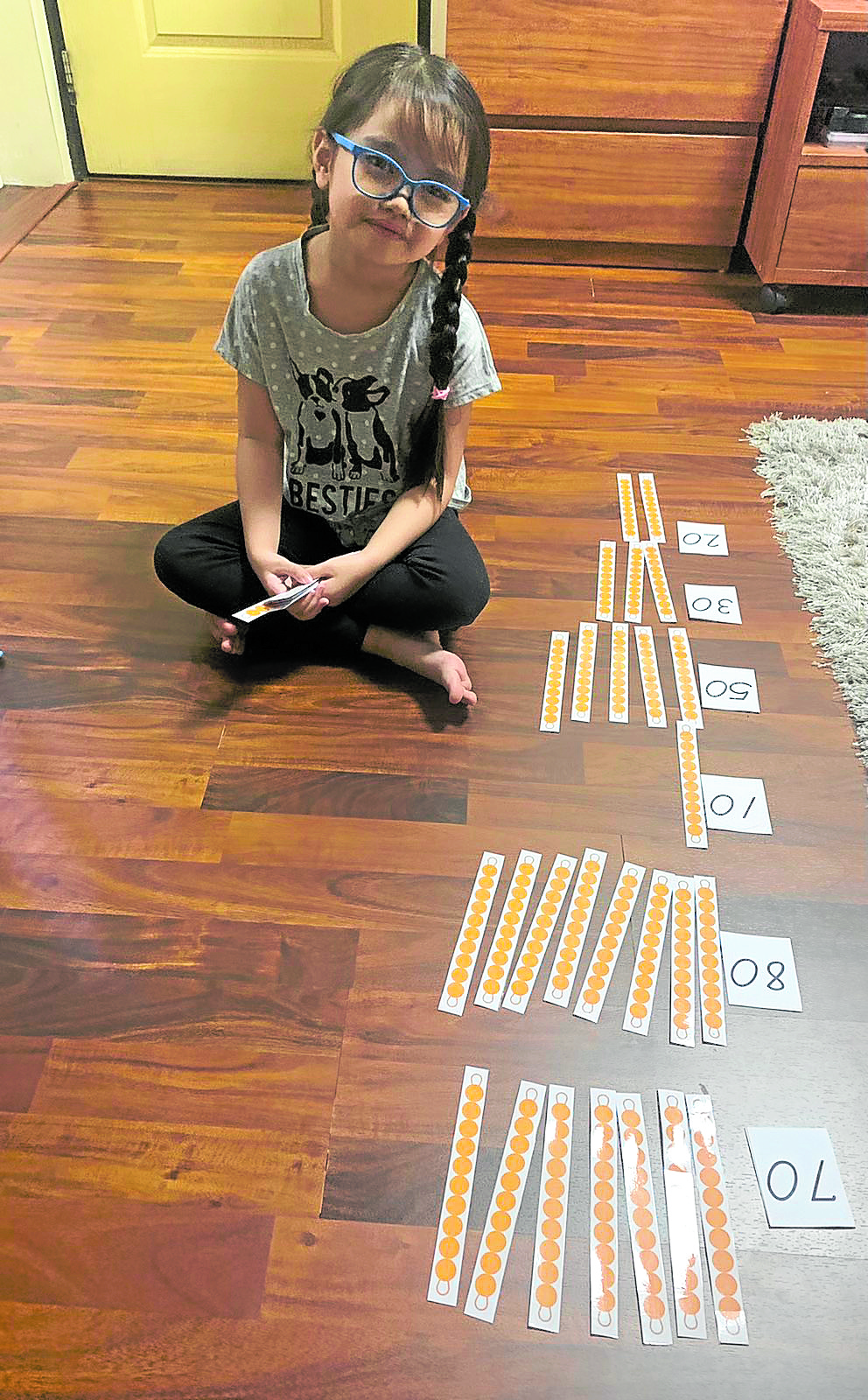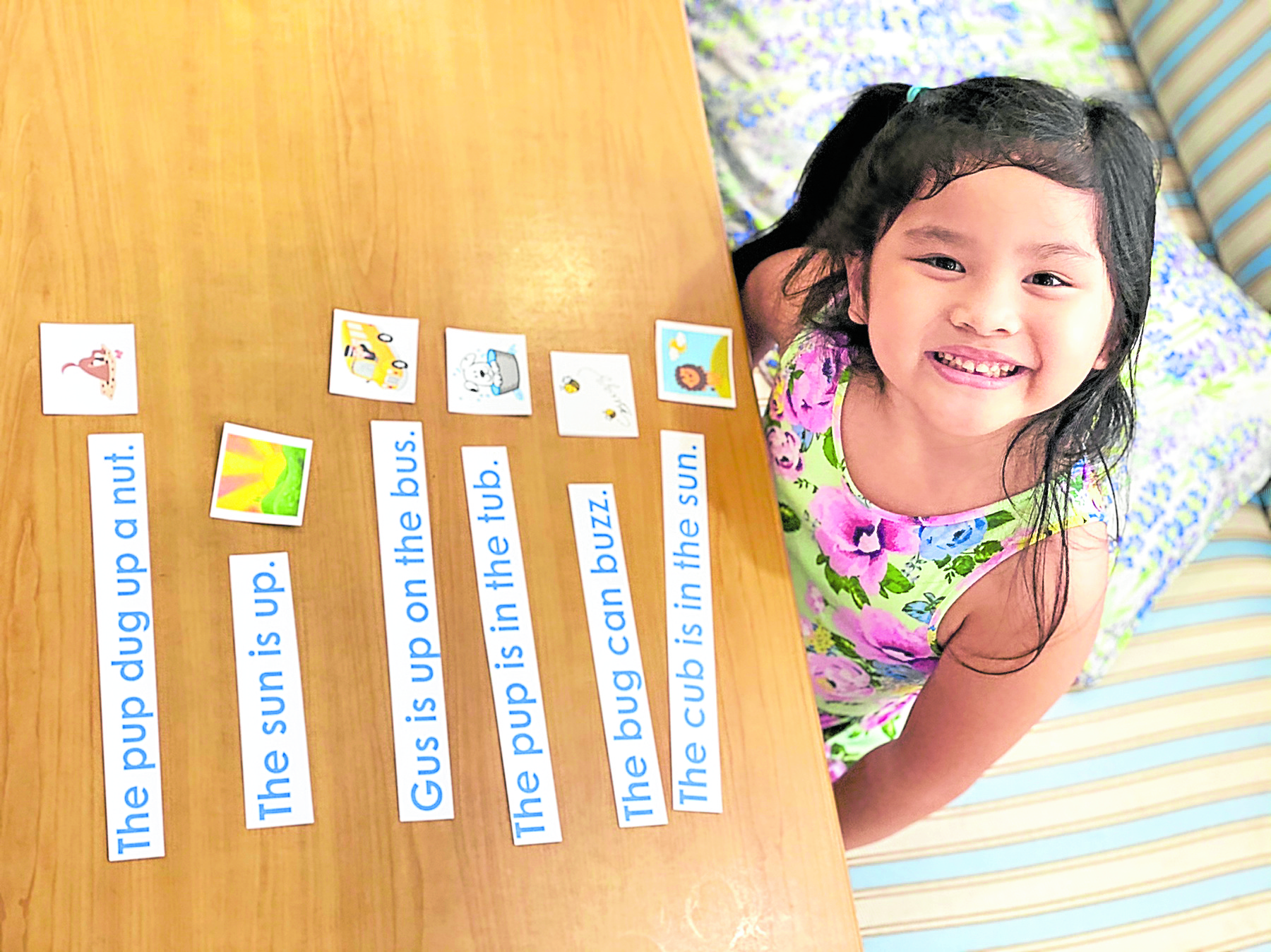
Although online learning for preschool children is challenging, a virtual approach that emphasizes the inclusion of a good amount of learning materials and an emphasis on interactive experiences can bring pleasantly successful results.
Young children are multisensorial learners who absorb concepts best through concrete materials. Child development experts acknowledge that preschoolers learn more effectively when they have things they can touch, manipulate and experience—something that is difficult to achieve outside the context of a physical classroom.
Thus, when Montessori of Loyola (MOL) preschool in Varsity Hills, Katipunan, Quezon City, prepared for online learning, it analyzed what made its onsite classes work very well and what could be adapted in a distant-learning environment. One of the big answers was a wealth of hands-on materials that children could use at home.
Two months into the start of the school year, parents have commented on how learning materials have been utilized as powerful teaching tools at MOL’s online classes.
“Online classes have been effective for Hanna because of the very generous supply of materials provided by the school,” said Mary Joy Arañas, mother of the 5-year-old child. “It was like having a Montessori-style classroom at home. She has been very engaged in her classes.”
The Montessori approach of the school during a typical non-COVID school year uses specially designed materials in several learning areas. For virtual learning, MOL decided to replicate several of the key materials or suggested replacements.
Arañas also observed that Hanna has become an even better reader during her first two months in school. She shifted from reading slowly and sounding out words to fluently reading sentences and stories.


Giving tasks
Parent Claudine Lagdameo echoes the same observation. A former preschool teacher herself, the mother of three, including Lucho, 5, observed that using the materials provided, together with the teaching approach, was “good for the child’s retention.” She believes that using the school materials are more effective, compared to the traditional way of teaching via the blackboard, or lecturing through a computer screen. “It takes longer (to use the materials), but I really saw that the process is important.”
Her observation of the online class: “When given tasks using materials, the children don’t notice the time at all. And the task is related to the lesson.”
Because the children enjoy the class, MOL has been able to lengthen its online sessions. Most preschools, whether traditional or progressive, offer only 40 minutes to one hour of daily online sessions. MOL started with the same time period but within two weeks, the kindergarten children were able and excited to do two-hour daily classes.
Several features are also important for distance learning to succeed with preschoolers, parents noted. “In a small class, it is easier for young children to be noticed,” said Lagdameo. She saw that with larger online classes she tried earlier, teachers had difficulty noticing individual children and children did not feel involved.
A well-organized approach to the lesson is also vital for online classes, where limited time has to be used well.
After a demonstration on screen by the teacher, the preschoolers would work on the table or the floor using a material. Children surprisingly are motivated to do activities at the same time as their classmates, possibly because they crave the social connection.
Lagdameo said she sometimes hears complaints from friends that their children have difficulty absorbing the lessons presented via lectures or demonstrations during online classes. Those classes typically involve children, even young ones, just sitting in front of the screen and passively watching. Her friends complain they end up doing the teaching.


Sensorial
To ensure that online learning would work, MOL oriented parents on how to guide their children at the start of the year. For daily lessons, busy parents watched how the teachers presented a lesson live during online class and then copied how the teacher worked with and talked to their own children, for the after-class work.
Another key feature for successful online learning for preschoolers is a variety of creative and exploratory activities to balance out the more academic topics. This adds to the enjoyment of children.
Classes also included sensorial activities, which focus on the refinement of the senses; practical life activities, for lessons on developing competence in everyday life; theme activities, including those focusing on social studies, geography and science; music and movement; and storytelling. The school encourages parents to pay attention to the children’s interests as they work with materials.
Hands-on materials are used for all the different preschool age groups.
Arañas recalls her fear at the start of the school year about the pressures she would feel in guiding her three children—two in grade school and one in preschool—during online classes. Many of her parent-friends have complained of the stresses of preparing materials and printing out worksheets weekly and assisting their children. With MOL, she was surprised at how little she needed to prepare and was pleased at how much her child enjoyed her class.
“My daughter got the best of both worlds,” said Arañas. “Hanna saw her classmates, and she really enjoyed and learned from her online classes. At the same time, she really liked that she was at home and that I was nearby and under the same roof.” —CONTRIBUTED
The author is the directress of Montessori of Loyola preschool. Email [email protected].









































